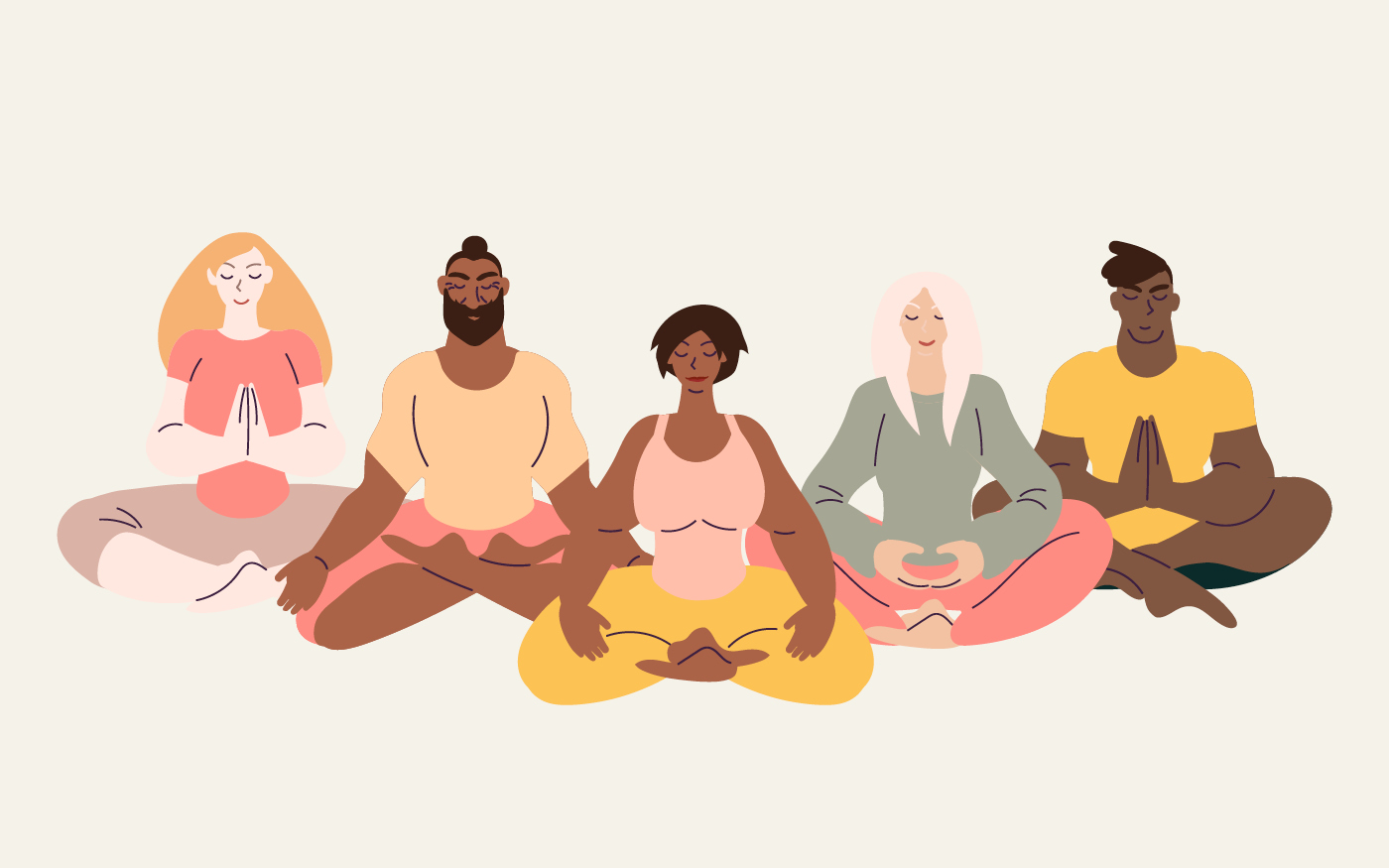1) Every Body Yoga
Let Go of Fear, Get on the Mat, Love Your Body
Jessamyn Stanley • Workman
Most people feel awkward during their first yoga class. For Jessamyn Stanley, being the largest woman in the studio only compounded this. Fast-forward a few years, and Stanley is an Instagram sensation for chronicling how a “big, black, and beautiful African Queen” can be as yogic as the idealized (and grossly misleading) representation portrayed in women’s magazines. With Every Body Yoga, Stanley, now a certified teacher, takes that a step further.
This book—a solid mixture of pose and sequencing instruction, introduction to the history and philosophy of the practice, and beginner’s tips to help you feel slightly less awkward when you start out—also tells Stanley’s story of how falling in love with yoga helped her fall in love with herself. Not only is this an inspiration for anyone who has ever felt different or has struggled with self-image, it’s an absolute testament to what yoga, at its core, is really all about.
2) Mindful of Race
Transforming Racism from the Inside Out
Ruth King • Sounds True
Long-overdue discussions around race in America are finally having a moment—one that needs to last a very long time.
The “post-racial America” illusionary bubble has been burst. Put simply, to imagine we are (or even aspire to be) color-blind is just to be blind to reality. So, where is mindfulness in all this? Is the spread of this practice, touted as something truly transformational, making a dent anywhere in our understanding and our race relations? If Ruth King has her way, it will. With Mindful of Race, King joins other voices demanding contemporary mindfulness practice go beyond being another luxury of the privileged to become something that enables us to explore deep habits together in ways that effect real change.
King calls racism a “heart disease” that can go unnoticed and untreated for a long time. In response, she developed a three-and-a-half-day program with the same name as the book that “brings mindful inquiry to an examination of racial conditioning and social distress.” She unfolds her training on the page in three phases: In Diagnosis, we uncover “the narrative we hold along racial lines”; in Mindfulness—Heart Surgery, meditation practice helps us investigate deeply while “softening the grip of the tension” from emotions triggered by going to rarely explored places; and Recovery is about how we can spread understanding, caring, and equanimity about race from our inner circle to the bigger circles in the world.
3) The Inner Work of Racial Justice
Healing Ourselves and Transforming Our Communities through Mindfulness
Rhonda V. Magee • Tarcher Perigree
Early in this book, Rhonda Magee tells a little story that both breaks your heart and potently illustrates why she has devoted her life’s work to getting to the heart of bias and helping undo its deleterious effects. She recounts the first time she came to see fully how other people could view her in a completely different light than she and her family viewed her. She saw that there was a wall dividing people—a wall that could be nearly invisible until you bumped up against it.
Magee has brought together experience as a law professor and a longtime practitioner of mindfulness—and training as a mindfulness teacher—to host classroom conversations about race, privilege, and bias that few of us ever take part in, particularly in a mixed-race context. She’s learned a lot from years of this kind of hands-on work. For one thing, it has taught Magee that color blindness is an unhelpful concept for promoting equity and justice. Despite the fact that race is “socially constructed” and ultimately a “fiction,” our perception of significant differences is unmistakable, so we cannot be “blind” to color. That’s simply a prescription for being blind to our biases.
Instead, Magee teaches and practices what she calls ColorInsight, using contemplative practices to peer into and beyond our biases. It starts from a view that we are deeply interconnected, but need to “take a long (lifelong), loving (heartful and compassionate) look at racism,” where “staying in our discomfort” can be “an important part of healing and transformation.” Through instruction, stories, history (both legal and otherwise), and insight, Magee takes us on a very rewarding, vital, and timely journey.
4) Stay Woke
A Meditation Guide for the Rest of Us
Justin Michael WIlliams • Sounds True
Many “spiritual” writings give only incidental mention of the social and material struggles people face. They imply, “Inequality, marginalization? That’s an out-there problem. Ignore it and meditate.” Having reckoned with homophobia, personal trauma, and stress rooted in poverty, racism, and domestic violence, Justin Michael Williams has no time for that: “You need a different type of meditation. One that doesn’t pretend the struggle doesn’t exist.” He demonstrates real strength through the honesty and vulnerability of his first book. With “Freedom Meditation,” he offers you 10 steps to create a meditation (and life) practice that’s about fearlessly embracing all of who you are, to explore both your inner and outer worlds: “Meditation is not about relaxing. Meditation is about becoming more alive.”
5) Beyond Guilt Trips
Mindful Travel in an Unequal World
Anu Taranath • Between the Lines
Growing up in the US as the child of Indian immigrants, Taranath, a professor at the University of Washington, felt she never quite fit the image of an American. Nor was she fully at home when studying in India. She describes “the familiar patterns of shame and guilt that lure me in like a comfortable sofa.” Beyond Guilt Trips arose from her conviction that, to bridge social and cultural differences, we must get in touch with global inequality and our discomfort in facing it. Only then, she says, can we “know that our differences might not be everything.” Enlivened by her travel stories—at once tense, challenging, and brightly beautiful—Taranath’s book may become required reading for those who wander, and those who want to.








